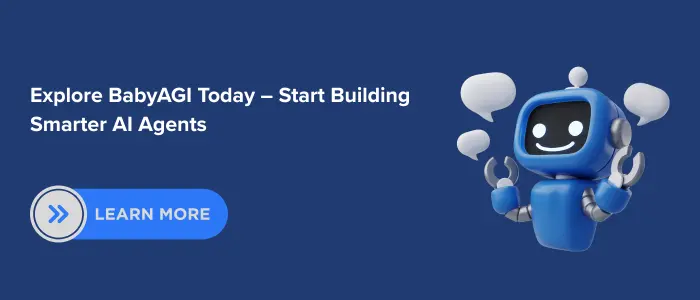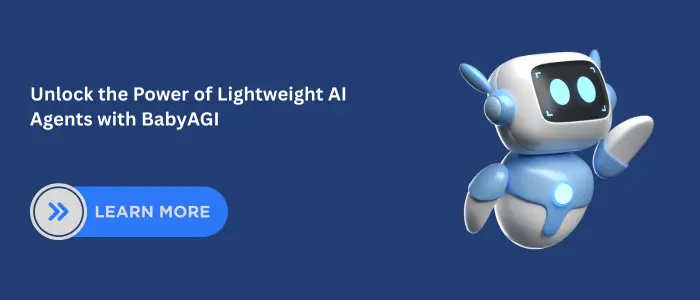Introduction
Artificial Intelligence (AI) has evolved rapidly over the last few years, moving from simple rule-based systems to advanced large language models (LLMs) capable of complex reasoning. One of the most exciting trends in this growth is the rise of lightweight AI agents small yet powerful systems that handle tasks with efficiency and minimal setup. BabyAGI, in particular, has captured the attention of developers, researchers, and businesses alike.
Unlike massive frameworks that require heavy computing power, BabyAGI offers a streamlined and accessible way to experiment with autonomous task execution. Moreover, it acts as a practical playground for AI automation, demonstrating how a compact agent can create, prioritize, and complete tasks without human intervention. In this blog, we explore what BabyAGI is, explain how it works, outline its key benefits and limitations, and show why it serves as a stepping stone toward the future of AI autonomy. In addition, we compare it with other AI agents, highlight real-world use cases, and provide a simple guide to help you get started.
1.What is BabyAGI?
Yohei Nakajima created BabyAGI as a lightweight autonomous AI agent and a simplified framework for task management powered by large language models (LLMs).The idea behind BabyAGI was to demonstrate how an AI system can create, prioritize, and execute tasks in a continuous loop without the need for complex infrastructure. Unlike larger AI frameworks such as AutoGPT, BabyAGI is intentionally minimal to help developers understand the building blocks of autonomous agents.
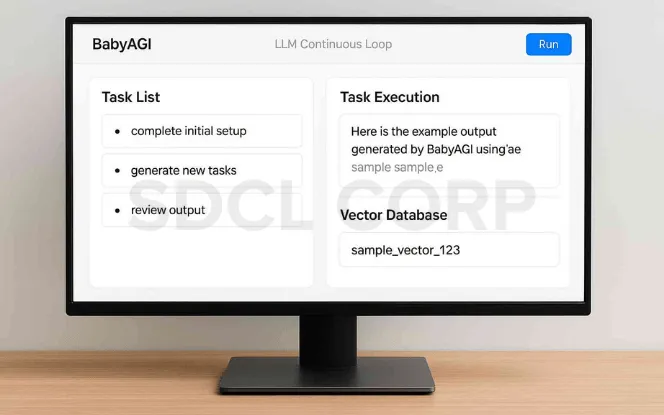
Key highlights that define BabyAGI include:
- It operates on a simple task loop with minimal coding requirements.
- It uses an LLM and a vector database for continuous learning.
- It serves as an educational tool for exploring autonomous AI.
At its core, BabyAGI maintains a task list, selects the next task to execute, generates the output using an LLM like GPT-4, and then stores the results in a vector database. This cycle repeats as the system creates new tasks, reprioritized existing ones, and learns from stored results. The design makes BabyAGI both accessible and educational, bridging the gap between simple chatbots and advanced multi-agent frameworks.
2.How BabyAGI Works
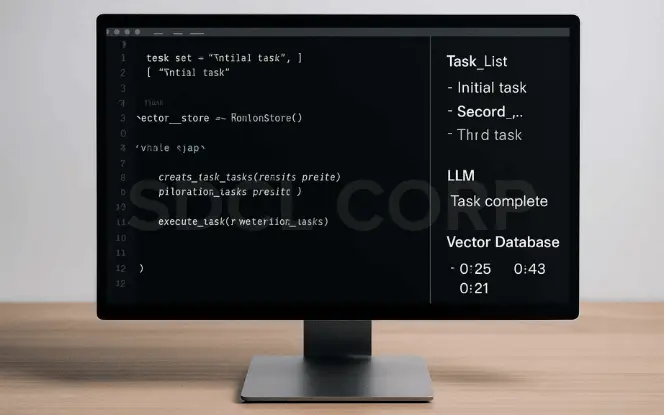
The simple yet effective task loop explains the inner workings of BabyAGI. Instead of relying on a massive architecture, it uses just a few essential components to achieve autonomous task execution. At its core, BabyAGI maintains a running list of tasks. It selects the highest-priority item, executes it with the help of a large language model (LLM), and then stores the outcome in a vector database. This stored data allows BabyAGI to refine its actions and generate new tasks in response to evolving goals.
We can summarize the process in three essential steps:
- Task creation: The system generates new tasks based on the results of completed ones.
- Task prioritization: It organizes tasks in order of importance to ensure smooth execution.
- Task execution: The LLM processes the chosen task and stores the results for future reference.
As this cycle continues, BabyAGI evolves into a self-sustaining agent capable of handling increasingly complex instructions. The simplicity of this loop makes it an excellent learning tool for beginners while also offering researchers a testing ground for more advanced agent behaviors. By keeping the design lightweight, BabyAGI strikes a balance between accessibility and autonomy, making it a practical example of how AI agents can manage dynamic workflows with minimal human input.
3.Benefits of BabyAGI
One of the biggest advantages of BabyAGI is its simplicity. Developers and researchers do not need heavy infrastructure or complicated setups to experiment with autonomous AI agents. Instead, BabyAGI offers a lightweight framework that can run on a local system while still showcasing the fundamentals of autonomy. This accessibility has made it a popular choice among beginners who want to understand how AI agents work in practice.
Key benefits of BabyAGI include:
- Lightweight design: Easy to set up and run without requiring high-end hardware.
- Educational value: Helps developers learn the basics of task management and AI autonomy.
- Flexibility: Developers can adapt it for different types of workflows and experiments
In addition, BabyAGI allows rapid prototyping. Because of its modular and minimal design, developers can tweak components such as the vector database or the task management system to suit their needs. Businesses and startups can also benefit by using BabyAGI as a foundation to test ideas before committing to larger, resource-intensive frameworks. In this way, BabyAGI becomes more than a toy project—it acts as a stepping stone toward scalable AI solutions.
4.Limitations and Challenges

While BabyAGI is a powerful tool for learning and experimentation, it also comes with limitations. Since it relies heavily on APIs from LLM providers and vector databases, running BabyAGI continuously can quickly become resource-intensive. Moreover, like most AI agents, it is prone to generating hallucinations results that sound convincing but may be inaccurate or irrelevant.
The main challenges users face include:
- API dependency: Requires access to paid APIs like OpenAI and Pinecone.
- Resource costs: Long-running tasks can consume significant tokens and credits.
- Accuracy issues: Without human oversight, it may drift into irrelevant or incorrect results.
These challenges highlight the fact that BabyAGI is not yet a production-ready solution for businesses. Researchers and developers should treat it as an educational sandbox or an experimental foundation for exploration. With careful monitoring and adjustments, however, it can provide valuable insights into how autonomous agents behave in real-world scenarios.
5.Practical Use Cases

Despite its simplicity, BabyAGI can be applied in many creative ways. It can help researchers summarize information, assist marketers in generating ideas, or provide developers with automation for repetitive tasks. Even though it is not as robust as larger frameworks, BabyAGI demonstrates how lightweight agents can still deliver meaningful results.
Some practical use cases include:
- Research assistance: Summarizing long documents or articles into actionable insights.
- Marketing content: Generating blog outlines, campaign ideas, or social media posts.
- Developer workflows: Automating coding tasks, bug triaging, or basic documentation.
As businesses explore AI-driven automation, BabyAGI acts as a proof of concept for how agents can streamline workflows. Moreover, even in its lightweight form, it can inspire new possibilities. Therefore, it shows how small-scale AI projects can gradually grow into enterprise-ready solutions over time.
6.BabyAGI vs Other Agents
When comparing BabyAGI to other AI agents like AutoGPT or LangChain agents, the differences become clear. AutoGPT, for example, is far more advanced and designed for broader applications, but it requires significant computing power and setup. BabyAGI, on the other hand, focuses on minimalism and accessibility, making it an easier starting point.
Key differences to consider:
- BabyAGI vs AutoGPT: BabyAGI is simpler and lightweight, while AutoGPT is feature-rich but resource-heavy.
- BabyAGI vs LangChain agents: BabyAGI demonstrates autonomy directly, while LangChain provides a framework to build customized agents.
- BabyAGI for beginners: Ideal for learning, whereas other agents may be more suited to production-level tasks.
This comparison makes clear that BabyAGI does not aim to compete with larger frameworks. Instead, it complements them by serving as a foundation where learners and innovators can build their knowledge before moving on to more advanced tools.
7.How to Get Started with BabyAGI
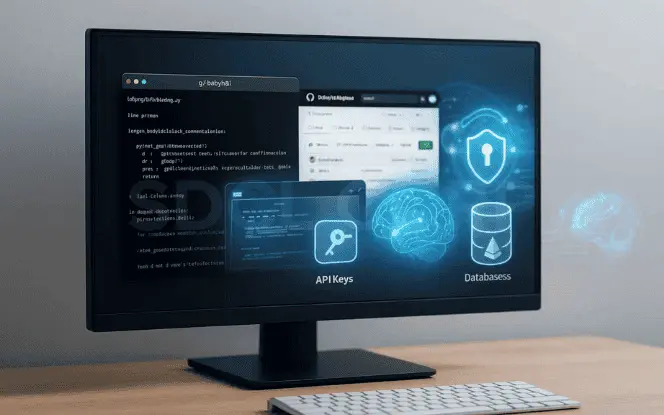
One of the best aspects of BabyAGI is how easy it is to get started. Users only need basic knowledge of Python and access to an API key from OpenAI and a vector database like Pinecone or Chroma. With these elements, anyone can run BabyAGI locally and begin experimenting with its task management loop.
The setup typically involves:
- Cloning the GitHub repository created by Yohei Nakajima.
- Installing dependencies such as Python libraries for LLM and vector database integration.
- Configuring API keys for OpenAI and a database like Pinecone or Chroma.
Once the environment is ready, BabyAGI can begin executing tasks in its loop. Developers can experiment by adjusting prompts, task lists, and database storage methods. These customizations allow BabyAGI to evolve beyond the basic demo and become a versatile playground for AI exploration.
Conclusion
BabyAGI may be small in design, but its impact on the AI community has been significant. By showing how lightweight AI agents can manage tasks autonomously, it offers a practical example of autonomy in action. Developers, researchers, and businesses can use it as both a learning tool and a testing ground for future AI projects.
As the world moves toward greater automation, BabyAGI highlights the importance of accessibility and experimentation. It proves that even simple frameworks can pave the way for innovation, making autonomy more approachable for everyone. Whether you are just beginning your AI journey or exploring new tools for research, BabyAGI is a valuable project to learn from and build upon.
Related Blogs:-
FAQ'S
What is BabyAGI in simple terms?
BabyAGI is a lightweight autonomous AI agent designed to automatically create, prioritize, and execute tasks using large language models such as GPT-4. Think of it as a small-scale AI assistant that can manage a to-do list on its own, learning and improving with every task it completes. Its simplicity makes it an excellent starting point for anyone curious about AI automation.
How is BabyAGI different from AutoGPT?
While both BabyAGI and AutoGPT are AI agents, their complexity levels differ. BabyAGI is minimalistic, easier to install, and focuses on demonstrating the basic concept of AI autonomy. AutoGPT, on the other hand, is more advanced, offering broader capabilities but requiring greater computing power, more setup steps, and deeper technical knowledge. In short, BabyAGI is ideal for learning, while AutoGPT is better suited for large-scale experiments.
Can BabyAGI be used for businesses?
Yes, businesses can experiment with BabyAGI, but it is mainly suitable for prototypes and testing rather than production. Companies can use it to explore automation strategies, generate research summaries, or brainstorm ideas. However, because of its lightweight design and dependency on external APIs, BabyAGI is best viewed as a proof-of-concept tool that can inspire larger, enterprise-ready AI solutions.
Do I need coding skills to use BabyAGI?
A basic understanding of Python is recommended for setting up and running BabyAGI. The installation involves configuring API keys and running scripts, which requires some familiarity with coding. That said, the project is intentionally kept simple so even beginners with minimal coding experience can learn and experiment without feeling overwhelmed.
Is BabyAGI the future of AI agents?
BabyAGI itself is not the final destination in AI development, but it plays an important role as a stepping stone. It showcases the potential of lightweight AI agents and demonstrates how autonomy can be achieved with minimal resources. By sparking curiosity and innovation, BabyAGI paves the way for more sophisticated AI agents that will likely shape the future of automation across industries.


